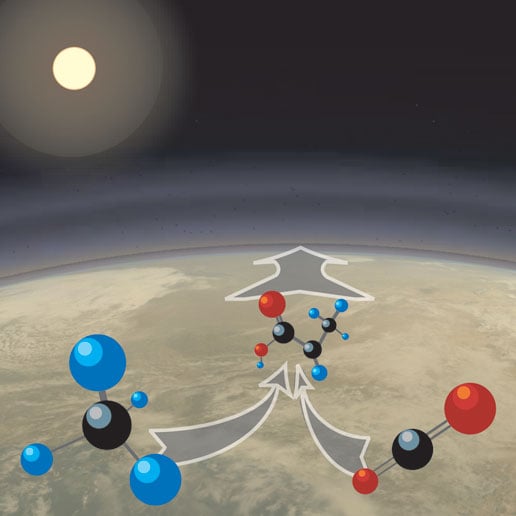The Cassini spacecraft ended its mission to Saturn and its moons two years ago when it was sent plunging into Saturn to be destroyed. But after two years, scientists are still studying the data from the Cassini mission. A new paper based on Cassini data proposes a new explanation for how some lakes on Titan may have formed.
"As scientists continue to mine the treasure trove of Cassini data, we'll keep putting more and more pieces of the puzzle together." Cassini Project Scientist Linda Spilker of JPL.
Titan, Saturn's largest moon, is the only body in our Solar System other than Earth which has liquid on its surface. On Titan the liquid isn't water, but ethane and methane, hydrocarbons with very low boiling points, allowing them to stay in liquid phase in Titan's frigid temperatures. Titan has about 650 hydrocarbon lakes in its polar regions.
The exact nature of these lakes is still not clear. Scientists thought that some of them are similar to karst lakes here on Earth. A weak acid like carbonic acid eats away at soluble rocks like limestone, and when the resulting cavity fills with water, it's called a karst lake. Scientists studying Titan think that the frigid moon's liquid methane could have dissolved the ice and organic compounds in the bedrock, and that those reservoirs could have filled with liquid hydrocarbons.
That explanation may fit some of Titan's lakes, but not all.
"This is a completely different explanation for the steep rims around those small lakes, which has been a tremendous puzzle." Cassini Project Scientist Linda Spilker of JPL.
There are roughly two types of lakes on Titan, and two size ranges. For the larger lakes with sharp boundaries, the dissolved-by-methane explanation fits. But for other lakes—smaller ones only tens of miles across—it doesn't fit. That's because many of them appear to have very steep rims that rise far above sea level, according to Cassini radar-imaging. A new paper suggests a different origin for these lakes.
This new paper is published in Nature Geosciences. It's title is " Possible explosion crater origin of small lake basins with raised rims on Titan." The lead author is Giuseppe Mitri of Italy's G. d'Annunzio University.
Mitri and his colleagues behind the paper thought that the karst explanation didn't fit the Cassini radar images. The raised rims just didn't fit with the karst explanation.
"The rim goes up, and the karst process works in the opposite way," Mitri said. "We were not finding any explanation that fit with a karstic lake basin. In reality, the morphology was more consistent with an explosion crater, where the rim is formed by the ejected material from the crater interior. It's totally a different process."
What Could've Caused the Explosions?
It's likely that Titan has gone through periods of cooling and warming. Solar-driven chemistry has depleted and then restored the methane in the atmosphere over time. Scientists think that in the last half-billion years or so, atmospheric methane has acted as a greenhouse gas on Titan, although the temperatures have remained frigid compared to Earth.
During the times when the methane was depleted, the moon cooled. During those colder periods, nitrogen would've dominated the atmosphere. As the nitrogen rained down on the surface, it would've penetrated the icy crust and accumulated in sub-surface pools.
Then when the methane was restored, it would've acted as a greenhouse gas, warming the moon again. When that happened, the nitrogen would've become an explosive gas, blowing out craters on the surface, which then would've filled with liquid hydrocarbons. Mitri and the other authors of the paper think that this accounts for the steep rims around smaller lakes, that rise far above sea level.
"These lakes with steep edges, ramparts and raised rims would be a signpost of periods in Titan's history when there was liquid nitrogen on the surface and in the crust," said Cassini scientist and study co-author Jonathan Lunine, of Cornell University in Ithaca, New York. The authors say that even localized warming would have been enough to turn the liquid nitrogen into vapor, causing it to expand quickly and blow out a crater.
"This is a completely different explanation for the steep rims around those small lakes, which has been a tremendous puzzle," said Cassini Project Scientist Linda Spilker of JPL. "As scientists continue to mine the treasure trove of Cassini data, we'll keep putting more and more pieces of the puzzle together. Over the next decades, we will come to understand the Saturn system better and better."
More:
- Press Release: New Models Suggest Titan Lakes Are Explosion Craters
- Research Paper: Possible explosion crater origin of small lake basins with raised rims on Titan
- Universe Today: There are Ring-Like Formations Around the Lakes on Titan
- Wikipedia: Climate of Titan
 Universe Today
Universe Today



